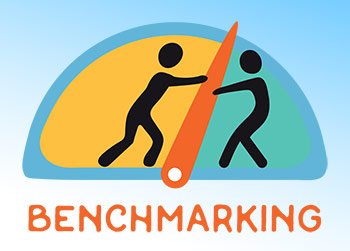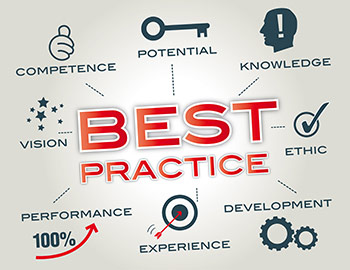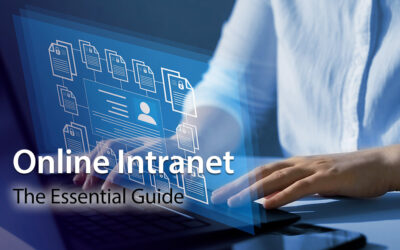When it comes to making sure you’ve got a top-notch, fully functioning intranet, your intranet design is a vital part of the building process. You need something up-to-date, something user-friendly and something capable of doing all the necessary data crunching. And if your intranet doesn’t do what it needs to do, it’ll drag down everyone’s efficiency with it.
You want to create a system that people can seamlessly integrate into their daily routines, not something that feels like a chore to use. You’re not putting together an obstacle – you’re developing something that will increase ROI and streamline all of your business processes.
 Rethinking The Way To Success
Rethinking The Way To Success
As time goes by and 2017 peeps over the horizon at us, more and more companies are turning their gaze in an introspective direction when it comes to developing substantial in-house changes. Customer experience is definitely important – but employee experience is just as key if you want to keep your organization humming along!
In his article ‘Boost Your Brand from the Inside’, CEO Burton Goldfield said the following:
‘One of the best ways to ensure that your employees are in sync is to maintain a robust, frequently published and widely used intranet. Having an intranet can be a relatively cost-effective way to keep the company’s message out there and ensure that all employees are working towards the same goals.’
That sounds good to us.
Rising To The Challenges
But wrapping your head around where to start, what sort of data you should be collecting and how best to make use of the data that you do collect can be a real challenge. There’s also the issue of designing a platform that is effective for users across the company – what an entry-level user needs from an intranet will be markedly different from what members of the executive staff need.
An intranet system should be a social platform, a communication hub and a place where all significant company information is accessible to those who need it. It should also exist to facilitate information sharing with unparalleled immediacy. According to an article in Entrepreneur focusing on knowledge sharing: ‘Intranet solutions allow employees to share information with coworkers and make previously shared information more searchable. This allows employees to seek and share information about common problems, minimizing the need for managers to step in.’
 Starting On The Right Foot
Starting On The Right Foot
Don’t just dive into intranet creation blindly and think you can figure things out as you go! You can’t afford to guess or take wild chances – so an integral part of the development of any intranet system is to take the time to plan things out and undertake all of the relevant research, data analysis and assessments. Here’s a six-step guide for starting things off in the best possible way.
1. Gap Analysis
This is a particular method that can be used to assess how a company is performing in terms of applications and information systems. Organizations should usually establish goals such as:
- Where are we at today?
- Where do we want to head from here?
- Where should we be channeling any extra energy or resources?
By following through on a gap analysis, it’ll be much easier to establish whether or not business requirements are being met.
2. Qualitative & Quantitative Data
Taking a deep look at both qualitative and quantitative data is an important step in helping an organization identify problem areas. Qualitative data is the best launching point – quantitative data will be much more helpful once fresh systems are in place, so there are real numbers to crunch. This qualitative data can take the form of questionnaires and surveys or interviews, and the pool of subjects can include management staff, end users, and executive or C-suite team members.
 3. Benchmarking
3. Benchmarking
Setting benchmarks – and working towards them – is a straightforward and really helpful way to measure performance and compare that performance to that of industry leaders. It’s a way to ascertain what’s working and what isn’t with regard to business processes and practices.
4. User Needs & Keeping Things User-Friendly
A really useful technique to use when you’re trying to make sure things are user-friendly and accessible is to create target personas. These personas are ‘characters’ that you create to relate to different groups of users – it’s often easier to really figure out what will make ‘Marcia the CEO’ and ‘Greg the sales rep’ happy than it is to look at things more abstractly. It’ll give you an ideal way to figure out what features need to be prioritized in the design process, and vitally, it’ll mean that the end-user is constantly in the back of your mind throughout the process.
5. Know How Your Users Behave
Establishing the different roles of different users is a crucial part of figuring out the varying ways in which your intranet needs to be able to behave. Work through what your personas need to have access to figure out where there’s overlap and what concerns are unique to people in specific roles, and you should be able to develop a comprehensive system.
6. Create a Site Map
If you want to pick one place to kick things off from, figuring out what your company will actually need is a very good place to start! One way to do this is by sorting out an intranet site map so that you know where you’re going!
 Best Practices For Designing Your Intranet
Best Practices For Designing Your Intranet
There are a few characteristics that are demonstrated by the best of the best corporate intranet systems. The real pick of the crop are:
- Engage with users
- Simplify the system
- Set standards
- Measure data
- Promote the value of the system
When starting out on creating your intranet try to keep these concepts in mind apply then wherever you can.
How Much Customization Are You Looking For?
It’s really important to understand the limitations of your intranet design. If you’re looking for ultimate freedom with regard to customization, you need to make sure that you’ve got the finances to back it up. Building from scratch is an option, but you’re going to have to make sure that you’ve got adequate in-house IT power and the resources to make it happen. Alternatively, if you’re happy to be a little more flexible in what you’re doing, many SaaS solutions can be incredibly customizable straight off the shelf. Figure out what you need, and then you can figure out how to get there.
 The Elements Of Design: Make It Look Good!
The Elements Of Design: Make It Look Good!
All too often, intranet systems are left to their own devices – nothing pretty, nothing engaging, just pure function and nothing pleasant to look at whatsoever. But as time has gone by, the importance of appealing intranet aesthetics is proving more and more important. This harks back to the whole idea of ensuring that employee satisfaction and engagement is just as cared for as that of your customers. Everything needs to be slick, clean and free of distractions.
Managing Content & Enabling Social Media
Make sure that your audience – your employees – are engaged through interesting and informative content. Articles, videos, photos, there’s no limit except your marketing team’s imagination! And social media is a fabulous way to reflect your company’s ethos. Rather than clamoring for likes and favorites, instead, it’s a way to engage both with clients and staff members. You want to make those who work for your company proud to be a part of your organization. Embedding you company social media feed into your intranet, perhaps on the home page will help all employees stay up to date on your brand.
Need Some Help?
A successful intranet needs a thoughtful design process. It can be a complicated journey for the first time creator – so talk to us for a free intranet demo today to see what the possibilities of a My Hub enabled intranet system can be.


 Rethinking The Way To Success
Rethinking The Way To Success Starting On The Right Foot
Starting On The Right Foot 3. Benchmarking
3. Benchmarking Best Practices For Designing Your Intranet
Best Practices For Designing Your Intranet The Elements Of Design: Make It Look Good!
The Elements Of Design: Make It Look Good!




0 Comments